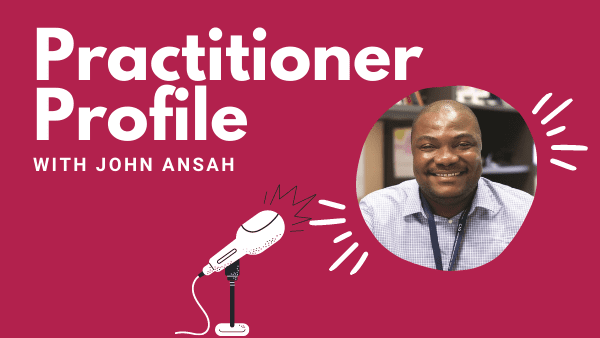Practitioner Profile: John Ansah, Duke NUS Medical School
Welcome to Practitioner Profiles, a series of up-close blog-length interviews with experienced System Dynamics practitioners. We have a standard set of 10 questions and let practitioners take the responses in any direction they choose. They tell us about who they are, how they got involved with the field, how they work with clients, and in what new directions they may be heading. A new profile will be posted every few weeks during 2021.
For any questions or comments, please contact the editors of these interviews, Dr. Jack Homer (jack@homerconsulting.com) and Dr. Saras Chung (saras@skipdesigned.com).
For today’s highlight, we talk with Dr. John Ansah from Duke-National University of Singapore Medical School.
What kinds of SD project applications do you do at Duke-NUS?
I am in the Health Services and Systems Research Department, where we teach and do projects on population health, health care, and social care.
What is distinctive in your approach to SD projects?
We use system dynamics as an organizing framework for big projects with many workstreams and diverse methodologies. This allows us to introduce SD methodology to experts in health services research so that they can use or translate model insights to inform policy. Our projects are mainly in Singapore, but for the past few years we have also worked in Cambodia, Thailand, and Vietnam, and are now exploring opportunities in the Philippines, Malaysia, and Indonesia.
What is your role at Duke-NUS, especially on the SD project work?
I am the lead SD teacher and researcher at Duke-NUS. I lead the SD projects, do the modeling, and train the project staff working with me. In addition, I run workshops to introduce health care professionals to systems thinking and system dynamics methodology.
How did you originally get interested in SD, and when was that?
I was introduced to SD during my master’s degree program in Norway, in 2003. A professor at Oslo Business School introduced me to Professor Pal Davidsen at the University of Bergen. I spent a year taking all the required SD modeling courses, and then entered the PhD program.
What individuals and organizations are inspirations to you?
Many individuals in the SD Society inspire me, including Pal Davidson—my PhD advisor; Jack Homer—for his health care modeling; Peter Hovmand—for his ability to engage stakeholders and communicate complex insights; and Bob Eberlein—for his modeling support, advice, and guidance. An organization that inspires me is “The Behavioral Insights Team”, which applies behavioral insights to inform policy, improve public services, and help people and communities. I would like to see the creation of a similar organization that uses Systems Thinking and SD to inform public policy.
What accomplishments are you proud of?
Over the last 10 years, we have worked with many agencies and institutions within the health sector in Singapore, and SD has become increasingly accepted as a result. One example is a workforce planning project on ophthalmology services that led the Ministry of Health to consider changes in residency capacity. Another workforce planning project led the dental school in Singapore to consider expansion. Also, a model of long-term care for the elderly identified the need for certain modifications in such services. And a model for the Ministry of Health in Cambodia led to the funding of chronic disease management services which Cambodia didn’t have before.
What challenges have you experienced with respect to SD project work?
A few things. First, it can be hard to get the required time commitment from stakeholders to inform the modeling process. Second, data requirements for SD projects can be a challenge—especially for large projects that require many different sources of information and sometimes new data collection. Third, it can be hard to make the case for using SD, because it is new to many health care researchers and policymakers.
What kinds of SD project work would you like to be doing over the next 5 years?
Staying at Duke-NUS, I will continue to work on health and social care issues. I’m particularly interested in models to improve chronic disease investments, and the reorganization of primary care to provide more effective health care, especially for older adults with chronic diseases. I’m also interested in modeling the expansion of digital health technologies.
Are there any tweaks you would like to make in how you approach SD project work?
I’d like to increase the stakeholder engagement part of our projects. I want to learn how to engage multi-stakeholder groups to work together, develop shared measurement systems, and create virtuous cycles leading to collective impact.

